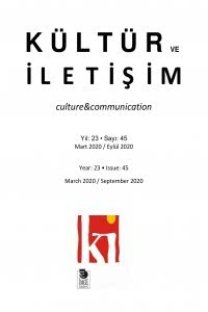Tarih, Sınıf ve Temsil: Türkiye Sinemasında Kürtlüğün Sol-Popülist İnşası
Bu yazıda 1970’lerde yapılmış Sürü, Fırat’ın Cinleri, Kara Çarşaflı Gelin, Hazal, Erkek Güzeli Sefil Bilo, Salako, Derviş Bey, Köprü, Kibar Feyzo LalvarDavası, Kanal gibi filmler üzerinden dönemin “Türklüğün sinema perdesinin” Kürtlerle meskûn coğrafyaları ve Kürtleri nasıl düşündüğü çözümleniyor. Söz konusu dönem ve filmler, Türklük ile Kürtlük arasındaki egemenlik ilişkileri çerçevesinde ele alınıyor. Dönem filmlerini, söz konusu egemenlik ilişkileri bağlamında analiz etmek, filmlerin yeni bir okumasını mümkün kılıyor. Kürtlerle meskûn coğrafyaları, toprak sahibi ağa/topraksız köylüler arasındaki “sınıf çatışmasının” uzamı olarak düşünen dönem filmlerinde Kürtlük; cinsellik, mekân, cinsiyet ve sınıf üzerinden üretilen temsillerle kuruluyor. “Feodal”, “batıl”, “ilkel” ve “çağdışı” olanın coğrafyası olarak kurgulanan Kürtlüğü dönüştürecek olan, ya Türklüğün egemen perdesine “çağırılıp”, orada medenileşen ve döndüğünde yerli/Kürt olanı medenileştirecek “beyazlaşan-yerliler” ya da bizatihi Hegelci-Marksist bir güzergâhta ilerlediğine inanılan Tarihin kendisidir
Anahtar Kelimeler:
Türklük, Temsil, TürklüŞün sinema perdesi, kolonyalist söylem, egemenlik ilişkileri, Kürtlük
History, Class and Representation: Left-Populist Construction of Kurdishness in Turkish Cinema
In this article, through the films produced in the 1970s such as Sürü, Fırat’ın Cinleri, Kara Çarşaflı Gelin, Hazal, Erkek Güzeli Sefil Bilo, Salako, Derviş Bey, Köprü, Kibar Feyzo LalvarDavası, Kanal, the way the period’s cinematic screen of Turkishness thinks the geographies inhabited by the Kurds and the Kurdish people has been analysed. The period and films in question have been discussed within the framework of relations of domination between Turkishness and Kurdishness. An analysis of the period’s films within the context of relations of domination makes a new reading of these films possible. In the period’s films that think the geographies inhabited by the Kurds as the space of “class conflict” between landlords and landless peasents, Kurdishness is constituted by representations produced through sexuality, place, sex and class. What will transform the Kurdishness that is fictionalised as the geography of the “feudal”, “superstitious”, “primitive” and “anachronic” are either “the whitened natives” who have been “interpellated” into the dominant screen of Turkishness and have been civilised there or the History itself which is believed to evolve through the Hegelian-Marxist course
Keywords:
Turkishness, representation, cinematic screen of Turkhisness, colonialist discourse, relations of domination, Kurdishness,
- ISSN: 1301-7241
- Yayın Aralığı: Yılda 2 Sayı
- Başlangıç: 1998
- Yayıncı: İmge Kitabevi Yayınları
